The content of the article
No modern kitchen can be imagined with antediluvian teapots made of aluminum or coated with enamel, the formerly fashionable teapots with a whistle have also sunk into oblivion, their products are firmly occupied by electric products that are firmly established. There is nothing surprising here, progress does not stand still, and devices, which are much more attractive than the former in appearance, work much faster and more efficiently. True, to the ideal, they also need to strive, they have such a nuisance as scum. But it can and should be fought with, while it is desirable to keep the teapot attractive and working.
Causes of scaling
It is well known that water is a solution in which not only various salts are present, but also metals and minerals, and when heated they tend to settle on the heating elements and internal walls.
The rate at which the scale builds up inside the kettle depends not only on the composition of the water in the region of residence, but also on the intensity of use of the kettle. If a common kettle is used primitively and boils water in it, putting it on a gas stove, then the scale formed on the inner surface and on the bottom impairs thermal conductivity, thereby increasing gas consumption. If the kettle is electric, the scale accumulates only on the heating element, and this can put the heating element out of operation, for this reason it must be removed in a timely manner, and it is very simple to do so.
Home remedies against scale in the kettle
To destroy and scum on the heating element of an electric kettle, there are a large number of ways, and the most inefficient and destructive among them is mechanical scraping. If you try to scrape with a sharp and hard object, for example, a knife, a heating element, it can be damaged, just as the body of the kettle can also be damaged, after which it will no longer be usable. Even if calcareous deposits inside the appliance are very thick, you still need to destroy them gradually, otherwise you will have to say goodbye to your favorite kettle and go to the store for a new one.
Chemical agents work most effectively, they cope with any layer of scale much better, make it loose, amenable to washing, or dissolve completely. Before starting to remove deposits, the inner surface of the kettle and the heating element must be hard-cleaned with a sponge, just not made of metal! It will be very easy to clean the helix with walls after treatment with such means:
- The method is simple, effective, it does not take much time. You need to pour water into the kettle and pour about 20 grams of baking soda. After waiting for the boiling water, set aside the container and allow time to stand. 20 minutes will be enough. After that, drain the water, pour a new one and dissolve citric acid in it, a tablespoon with a good slide. Let the kettle boil with acid and turn off the kettle, let it stand again for 20 minutes. Part of the scale can dissolve, and what remains, acquires a loose structure and easily lags behind. Now you can easily wash everything inside the kettle with a kitchen sponge.
- Standard kettles, working from the mains, can hold from 1.5 to 2 liters of water, table vinegar, 6%, about half a liter will be needed for this volume, pour vinegar into the kettle, then pour water into it up to the top risks.To loosen scale and clean the heating element, this composition should be brought to a boil and, having been turned off, left to rest and cool, you can even overnight. In this case, you need to take into account one nuance - an acetic scent that is powerful enough, but simple airing will help to get rid of it.
- Teapots are perfectly cleaned and with the help of brine, which remains in the banks after the vegetables are eaten. The liquid contains the same citric acid and the same vinegar, these ingredients just destroy the scale. This is done very simply - the brine is poured into the kettle, brought to a boil, cooled, washed out. By the way, with the help of brine from cucumbers, you can remove rusty drips from iron compounds.
- Above removing scale from the kettle, cleaning from potatoes works perfectly, for this you need to wash them well so that there is no sand, then fold them into the kettle, pour water up to the top level and put to boil. When the water boils, turn off the kettle and let it stand for an hour or two, then rinse thoroughly. If the raid is light, only apparent dust, it is enough to let the boil in the teapot clean off apples or pears and leave for some time.
- You can buy soda, such as cola, fanta, sprite and pour in the kettle. They contain orthophosphoric acid, which in this case works as a scum solvent, it copes even with persistent calcareous deposits. It is not necessary to boil such liquids, it is enough to let stand for several hours, then clean the inside with a hard washcloth and rinse.
- If there is oxalic acid in the house, it will also fit to remove limescale. Fresh sorrel also works well, only more time is needed, because the acid itself is less in the leaves.
What can be done for prevention
In order not to form a thick layer of scale, you need to regularly do preventive kettle, do not run it, so as not to spend half the output for cleaning a couple of times a year. It is better once a month to remove a thin layer of sediment, without waiting for the formation of a huge limestone layer, which from its own gravity in some places begins to split off.
When buying, it is better to opt for a model with a closed helix, or where instead of it a heating disc, it is easier to wash such products.To buy bottled, purified water, or to filter at home, it will bring more benefits to both the kettle and its owners.
Video: how to clean the electric kettle from scale

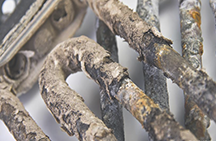



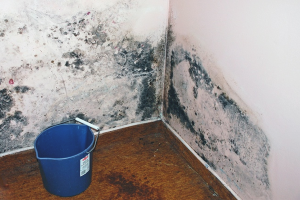
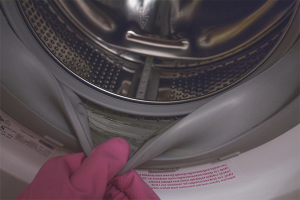
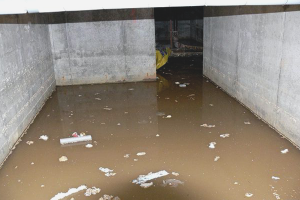

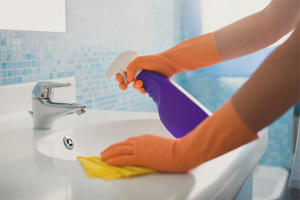
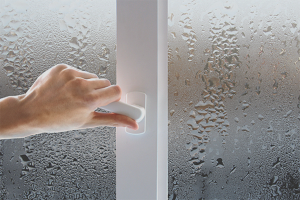
To send